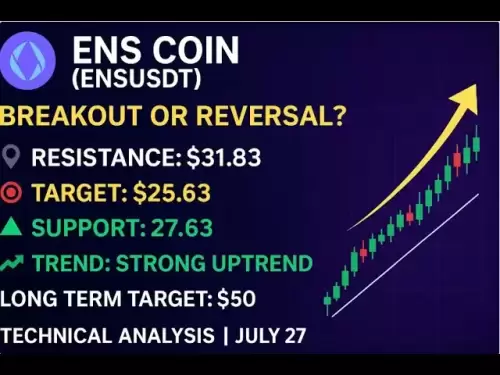-
 Bitcoin
Bitcoin $119800
1.38% -
 Ethereum
Ethereum $3873
3.25% -
 XRP
XRP $3.247
1.85% -
 Tether USDt
Tether USDt $1.001
0.02% -
 BNB
BNB $840.4
5.94% -
 Solana
Solana $190.0
2.55% -
 USDC
USDC $1.000
0.03% -
 Dogecoin
Dogecoin $0.2433
2.69% -
 TRON
TRON $0.3197
-0.05% -
 Cardano
Cardano $0.8367
1.39% -
 Sui
Sui $4.327
3.11% -
 Hyperliquid
Hyperliquid $44.00
0.31% -
 Stellar
Stellar $0.4461
1.76% -
 Chainlink
Chainlink $19.25
4.61% -
 Hedera
Hedera $0.2941
3.90% -
 Bitcoin Cash
Bitcoin Cash $598.4
6.89% -
 Avalanche
Avalanche $26.19
4.67% -
 Litecoin
Litecoin $115.1
0.50% -
 Shiba Inu
Shiba Inu $0.00001427
1.55% -
 Toncoin
Toncoin $3.379
2.01% -
 UNUS SED LEO
UNUS SED LEO $8.966
-0.16% -
 Ethena USDe
Ethena USDe $1.001
0.02% -
 Uniswap
Uniswap $11.04
4.16% -
 Polkadot
Polkadot $4.239
2.00% -
 Monero
Monero $324.6
0.36% -
 Bitget Token
Bitget Token $4.672
2.46% -
 Pepe
Pepe $0.00001294
2.69% -
 Dai
Dai $0.0000
0.01% -
 Cronos
Cronos $0.1443
2.71% -
 Aave
Aave $302.9
1.98%
Is USDT suitable for daily consumption?
USDT's volatility, limited acceptance, high transaction fees, regulatory uncertainty, and security risks make it unsuitable for daily spending; traditional payment methods offer greater stability and security.
Feb 28, 2025 at 06:30 am
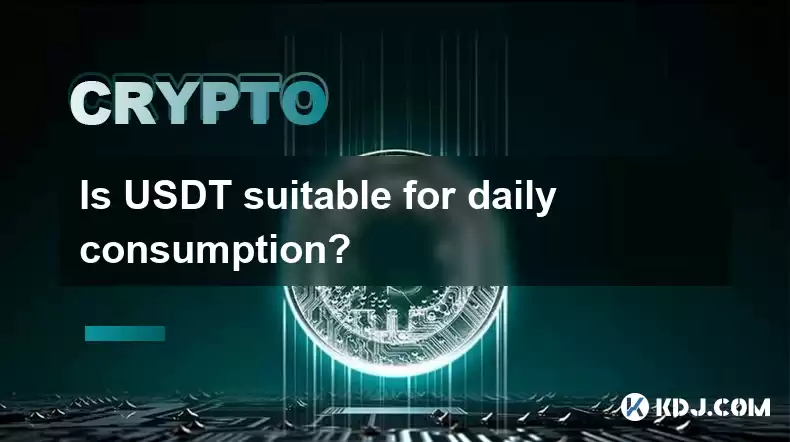
Is USDT Suitable for Daily Consumption?
Key Points:
- Volatility: USDT, while pegged to the US dollar, experiences fluctuations in its market price, making it unsuitable for daily transactions requiring price stability.
- Acceptance: While widely accepted in the crypto space, USDT's acceptance for everyday purchases in the real world is extremely limited. Most merchants do not accept cryptocurrency for goods and services.
- Transaction Fees: Transaction fees for using USDT, especially for smaller transactions, can be disproportionately high compared to traditional payment methods, rendering it inefficient for daily spending.
- Regulatory Uncertainty: The regulatory landscape surrounding stablecoins like USDT is constantly evolving and uncertain, introducing potential risks for users.
- Security Risks: While generally considered secure, USDT, like all cryptocurrencies, is susceptible to security risks, including hacking and scams, impacting the safety of your funds.
Is USDT Suitable for Daily Consumption? A Detailed Exploration
The question of whether Tether (USDT), a prominent stablecoin pegged to the US dollar, is suitable for daily consumption necessitates a multifaceted analysis. While USDT enjoys widespread acceptance within the cryptocurrency ecosystem, its applicability for everyday purchases outside this niche remains severely limited. Let's delve deeper into the factors determining its suitability for daily use.
- Volatility and Price Stability:
The core function of a stablecoin is to maintain a stable value, ideally mirroring the asset it is pegged to (in this case, the US dollar). However, perfect stability is rarely achieved. USDT, while striving for a 1:1 peg with the USD, has historically experienced periods of de-pegging, albeit often temporary. These fluctuations, however small, introduce uncertainty and risk into daily transactions. Imagine purchasing groceries with USDT, only to find the value of your USDT slightly lower at the point of purchase than when you acquired it, effectively costing you more. This unpredictability makes it ill-suited for scenarios demanding precise price control, unlike using fiat currency where the value remains largely consistent during the transaction process. Furthermore, the very nature of the cryptocurrency market, characterized by its inherent volatility, makes even small fluctuations in USDT's value a significant concern for daily transactions, particularly for individuals relying on a fixed budget. The potential for significant, albeit temporary, de-pegging events cannot be ignored, potentially resulting in substantial financial losses if a large amount of USDT is used for daily expenses. The algorithmic complexities of maintaining a stable peg and the potential for market manipulation introduce an additional layer of uncertainty that renders it impractical for everyday spending where reliability and predictability are paramount. The constant monitoring required to mitigate these risks makes using USDT for daily expenses a significantly more demanding and complex process compared to using traditional fiat currency.
- Acceptance and Merchant Adoption:
Perhaps the most significant barrier to using USDT for daily consumption is its limited acceptance by merchants and businesses outside the cryptocurrency realm. While many cryptocurrency exchanges and services readily accept USDT, most brick-and-mortar stores, online retailers, and service providers do not. This severely restricts the practicality of using USDT for everyday purchases. Unlike credit cards or debit cards, which are widely accepted globally, the adoption of cryptocurrency, including USDT, remains relatively niche. This lack of widespread acceptance renders USDT impractical for daily expenses where the ability to pay for goods and services is paramount. The infrastructure required to process USDT payments is also underdeveloped compared to established payment systems, further limiting its acceptance. Efforts are being made to increase cryptocurrency adoption, but the process is gradual and slow, making USDT's current applicability for everyday transactions extremely limited. Until significant changes occur in merchant adoption rates and payment processing infrastructure, USDT remains a less convenient and practical option for daily spending compared to established fiat currency and card payment systems. The current landscape necessitates the use of cryptocurrency exchanges or specialized platforms to convert USDT to fiat currency before making everyday purchases, adding an extra layer of complexity and time consumption to the process.
- Transaction Fees and Costs:
Transaction fees associated with using USDT can significantly impact its suitability for daily consumption. While fees vary depending on the network and transaction volume, they can be disproportionately high for smaller transactions, especially when compared to the low or negligible fees associated with traditional payment methods such as debit or credit cards. The cost of each transaction can erode the value of smaller purchases, making USDT an inefficient and potentially expensive method for daily spending. These fees can accumulate rapidly if multiple transactions are made daily, negating any potential benefits of using USDT. Moreover, the fluctuating nature of transaction fees adds an element of unpredictability, making budgeting and financial planning more challenging. The added complexity and cost of converting USDT to fiat currency before or after transactions further contribute to the overall expense. The combination of relatively high transaction fees and the added cost of conversion makes using USDT for small, everyday purchases impractical and potentially financially disadvantageous compared to traditional payment methods. The cost-benefit analysis strongly favors established payment systems for everyday transactions, especially for smaller purchases.
- Regulatory Uncertainty and Legal Compliance:
The regulatory landscape surrounding stablecoins like USDT is constantly evolving and remains uncertain in many jurisdictions. This regulatory uncertainty introduces potential risks for users, impacting the security and legal compliance of using USDT for daily transactions. Different countries and regions have varying regulatory frameworks, creating complexities for cross-border transactions and potentially exposing users to legal repercussions. The lack of clear and consistent regulatory guidelines increases the uncertainty surrounding the long-term viability and legal standing of USDT, potentially impacting its suitability for daily consumption. The potential for future regulatory changes could affect the accessibility and usability of USDT, adding further uncertainty to its long-term applicability for everyday transactions. Individuals considering using USDT for daily expenses should carefully assess the regulatory landscape in their jurisdiction and remain informed of any potential changes that could affect the legality and usability of this stablecoin. The evolving regulatory environment necessitates ongoing vigilance and awareness to mitigate potential legal and financial risks.
- Security Risks and Potential for Loss:
While generally considered secure, USDT, like all cryptocurrencies, is susceptible to security risks, including hacking, scams, and platform vulnerabilities. The potential for loss of funds due to these security risks is a significant concern, particularly when using USDT for daily transactions. The reliance on third-party platforms and exchanges to manage USDT adds an additional layer of security risk. Any compromise or failure of these platforms could result in the loss of funds. Users should take appropriate security measures to protect their USDT holdings, including using strong passwords, enabling two-factor authentication, and only using reputable exchanges and wallets. However, despite these precautions, the inherent risks associated with cryptocurrency cannot be entirely eliminated. The potential for loss of funds, even with robust security measures, renders USDT less suitable for daily consumption than traditional, more regulated payment methods where security measures and consumer protections are more established. The risk-reward analysis for using USDT for daily expenses leans heavily towards the risk side, especially when considering the potential for substantial financial losses.
FAQs:
Q: Is USDT backed by the US dollar 1:1?
A: Tether claims a 1:1 backing by the US dollar, but this claim has been subject to scrutiny and debate, with ongoing discussions and audits attempting to verify the actual reserves held. While Tether maintains the peg, independent verification remains a point of contention within the cryptocurrency community.
Q: Can I use USDT to buy groceries at my local supermarket?
A: No, the vast majority of supermarkets and retail stores do not currently accept USDT or other cryptocurrencies as payment for goods and services. Their payment systems are designed to handle traditional fiat currency and credit/debit cards.
Q: Are there any fees involved in using USDT for transactions?
A: Yes, transaction fees apply when sending or receiving USDT. These fees vary depending on the network and the volume of the transaction. For small transactions, these fees can be relatively high compared to traditional payment methods.
Q: Is USDT regulated?
A: The regulatory landscape for stablecoins like USDT is constantly evolving and varies across different jurisdictions. There is no universally accepted regulatory framework for stablecoins. The legal and regulatory status of USDT can be complex and differs significantly from region to region.
Q: Is USDT safe to use for daily expenses?
A: While Tether generally functions as intended, the inherent volatility of the cryptocurrency market, coupled with security risks associated with digital assets and the lack of widespread acceptance, makes it a high-risk option for daily consumption. The potential for loss of funds due to hacking, scams, or market fluctuations outweighs the potential benefits for most users. Traditional payment methods remain significantly safer and more practical for daily spending.
Disclaimer:info@kdj.com
The information provided is not trading advice. kdj.com does not assume any responsibility for any investments made based on the information provided in this article. Cryptocurrencies are highly volatile and it is highly recommended that you invest with caution after thorough research!
If you believe that the content used on this website infringes your copyright, please contact us immediately (info@kdj.com) and we will delete it promptly.
- Bitcoin's Potential Final Rally: Decoding Historical Data and Future Projections
- 2025-07-28 06:30:11
- BlockDAG, XRP, and Utility-Driven Growth: A New Era for Crypto?
- 2025-07-28 06:30:11
- Litecoin's ADX Crossover: Rally Potential or False Dawn?
- 2025-07-28 06:50:11
- Arctic Pablo Coin: Meme Coin Mania and Presale Buzz in 2025
- 2025-07-28 06:50:11
- Arctic Pablo: Meme Coin Mania or ROI Rocket?
- 2025-07-28 06:55:11
- Worldcoin's Wild Ride: Uptrend Battles Resistance Amidst Regulatory Waves
- 2025-07-28 07:00:12
Related knowledge

How to choose a reliable USDT exchange service provider? How to identify?
Jun 12,2025 at 03:15pm
Understanding the Role of USDT in Cryptocurrency TradingUSDT (Tether) is one of the most widely used stablecoins in the cryptocurrency market. It is d...
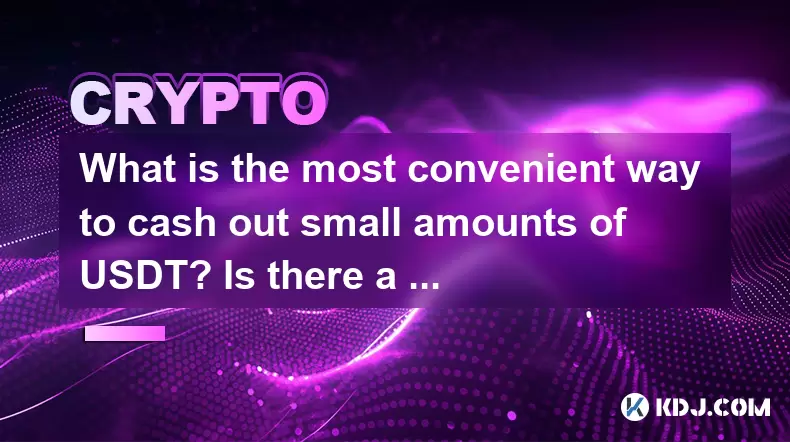
What is the most convenient way to cash out small amounts of USDT? Is there a shortcut?
Jun 11,2025 at 11:00pm
Understanding the Need to Cash Out Small USDT AmountsCashing out small amounts of USDT can be a challenge for many crypto users. Traditional methods o...

How to transfer USDT to PayPal or international payment tools?
Jun 15,2025 at 05:28am
Understanding the Basics of USDT and PayPal IntegrationUSDT (Tether) is a stablecoin pegged to the US dollar, offering blockchain-based value transfer...
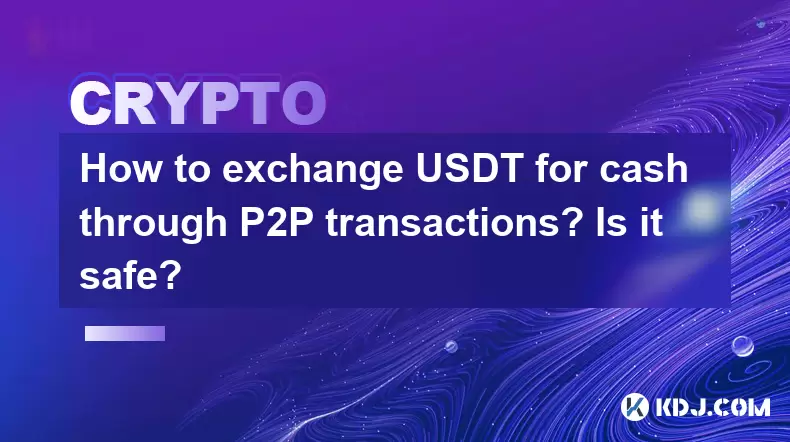
How to exchange USDT for cash through P2P transactions? Is it safe?
Jun 18,2025 at 07:56am
Understanding USDT and P2P TransactionsTether (USDT) is a stablecoin pegged to the value of the US dollar, making it a popular choice for users who wa...
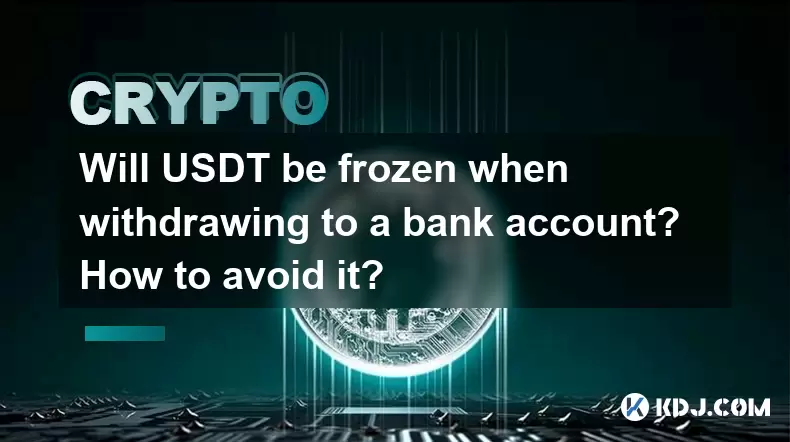
Will USDT be frozen when withdrawing to a bank account? How to avoid it?
Jun 15,2025 at 10:03am
Understanding USDT Withdrawals and Bank Account Freezing RisksWhen users decide to withdraw USDT (Tether) to a bank account, one of the most common co...

How to avoid risks when exchanging USDT for cash? What are the pitfalls?
Jun 11,2025 at 08:14pm
Understanding the Risks of Exchanging USDT for CashWhen exchanging USDT (Tether) for cash, users must be aware of the potential risks involved. As a s...

How to choose a reliable USDT exchange service provider? How to identify?
Jun 12,2025 at 03:15pm
Understanding the Role of USDT in Cryptocurrency TradingUSDT (Tether) is one of the most widely used stablecoins in the cryptocurrency market. It is d...

What is the most convenient way to cash out small amounts of USDT? Is there a shortcut?
Jun 11,2025 at 11:00pm
Understanding the Need to Cash Out Small USDT AmountsCashing out small amounts of USDT can be a challenge for many crypto users. Traditional methods o...

How to transfer USDT to PayPal or international payment tools?
Jun 15,2025 at 05:28am
Understanding the Basics of USDT and PayPal IntegrationUSDT (Tether) is a stablecoin pegged to the US dollar, offering blockchain-based value transfer...

How to exchange USDT for cash through P2P transactions? Is it safe?
Jun 18,2025 at 07:56am
Understanding USDT and P2P TransactionsTether (USDT) is a stablecoin pegged to the value of the US dollar, making it a popular choice for users who wa...

Will USDT be frozen when withdrawing to a bank account? How to avoid it?
Jun 15,2025 at 10:03am
Understanding USDT Withdrawals and Bank Account Freezing RisksWhen users decide to withdraw USDT (Tether) to a bank account, one of the most common co...

How to avoid risks when exchanging USDT for cash? What are the pitfalls?
Jun 11,2025 at 08:14pm
Understanding the Risks of Exchanging USDT for CashWhen exchanging USDT (Tether) for cash, users must be aware of the potential risks involved. As a s...
See all articles
























